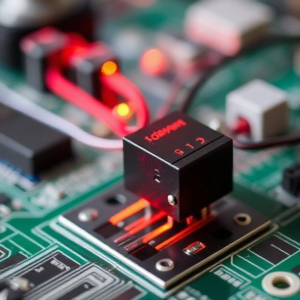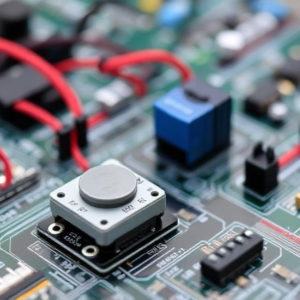Actuators in Electronics
Actuators are devices that perform actions based on instructions from a system, usually in response to a sensor or input. They convert electrical energy into mechanical motion or other forms of energy to perform tasks. Let’s break down some common actuators:

1. Servo Motor
- What it is: A motor that can precisely control its position.
- How it works: It has a built-in feedback system that helps it rotate to a specific angle. You tell the servo motor what angle to move to, and it will turn to that exact position.
- Common use: Used in robotics, remote-controlled cars, and cameras for adjusting angles, such as turning a robot’s arm or controlling the position of a steering mechanism.
2. DC Motor
- What it is: A motor that runs on direct current (DC) and rotates continuously when powered.
- How it works: When electricity flows through the motor, it generates a magnetic field, causing the motor to rotate. You can control its speed by adjusting the voltage.
- Common use: Found in things like fans, electric cars, toys, and other devices that need continuous rotation.
3. Stepper Motor
- What it is: A motor that moves in small, precise steps instead of continuous rotation.
- How it works: It rotates by a fixed amount (step) for each electrical pulse it receives. This gives you fine control over its position, without the need for feedback.
- Common use: Used in 3D printers, CNC machines, and robots where precise movement is needed, such as moving to exact positions in a step-by-step fashion.
4. LEDs (for visual indicators)
- What it is: Light-emitting diodes (LEDs) are small lights that light up when electricity flows through them.
- How it works: When current flows through an LED, it emits light. LEDs come in many colors and sizes, and they are very energy-efficient.
- Common use: Used to indicate the status of a device (like power on/off), displays (in clocks or digital readouts), or as visual feedback in electronics projects.
5. Buzzer or Speaker
- What it is: A device that makes sound when powered.
- How it works: A buzzer creates sound using a vibrating diaphragm or piezoelectric element. A speaker works similarly but usually has a more complex design to produce different pitches or tones.
- Common use: Buzzers are used in alarms, notifications, and alerts. Speakers are used in things like music players, sound effects in projects, or voice outputs.











